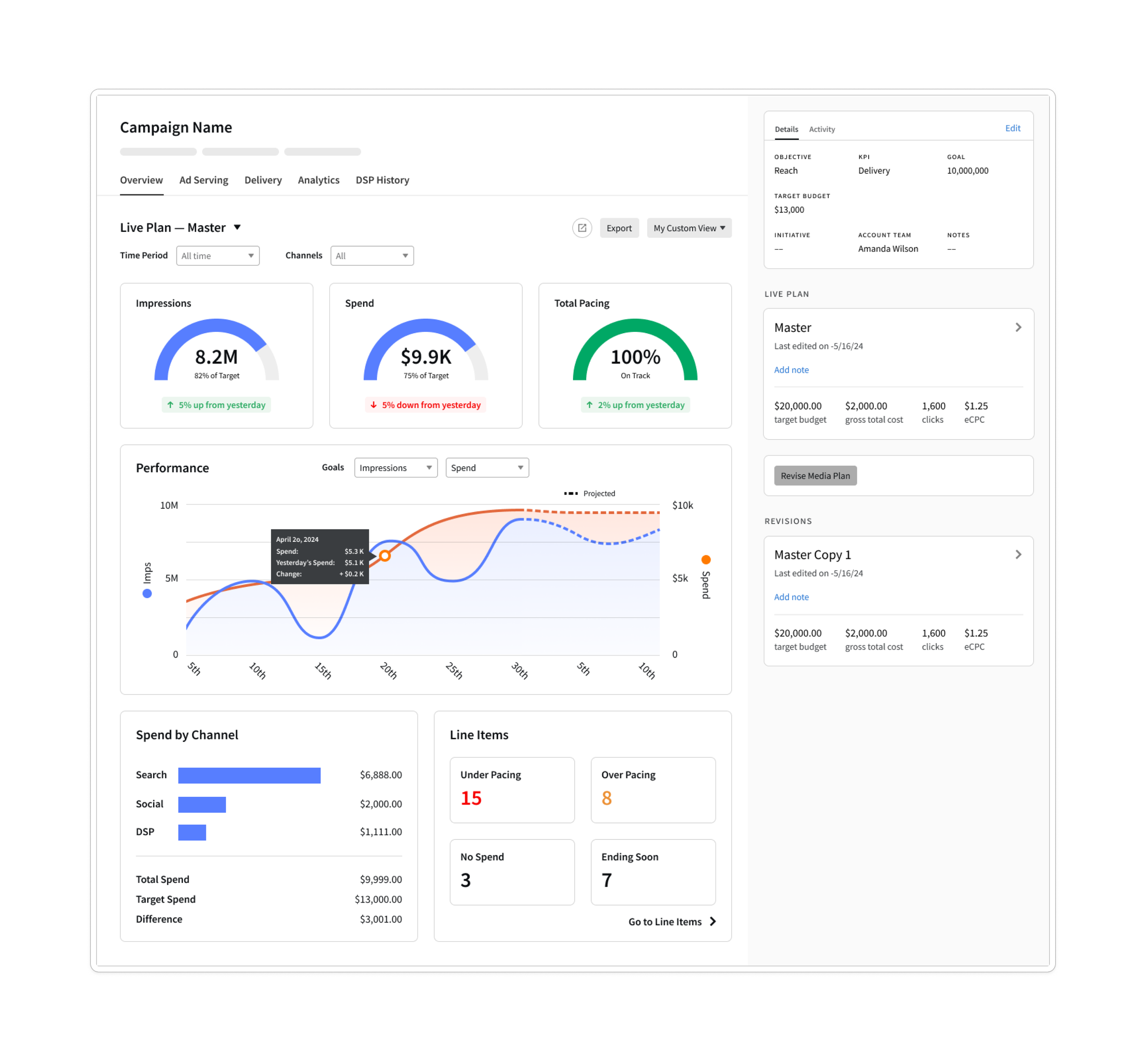DESIGN STUDIO
Challenge
As designers were relegated to different cross-functional teams, these teams worked on incremental changes with an air of not needing huge design influence. Due to the siloed nature of cross-functional teams, there was a lack of influence and knowledge sharing in order to make a case for more substantial, conceptual UX improvements to the platform.
Meanwhile, our product team was making incremental improvements at a low velocity without addressing major UX inefficiencies, which not only leads to poor user experience but could translate to lack of customer investment in-platform and thus lack of spending.
Process
The UX team wanted to conduct a study of blue sky thinking for longer lasting improvements, as well as classify strategic product updates as a “crawl, walk, or run” to make the suggested solutions palatable to cross-functional teams. I led 4 UX researchers in planning and conducting contextual inquiries, user interviews, and a UX competitive analysis to build out cohesive end-end user flows, with pain points, opportunities, and example UI and patterns to present and circulate to the tech org. We prioritized the campaign setup process - a core first step in-app for media planning and buying - as our initial area of focus.
1. Discovery
User Flows & Competitor Analysis
Powered by these UX research findings and product goals, I worked with the design team to cross-team collaborate on larger-scoped design concepts that could garner investment from product and engineering counterparts.
Amending design sprints, bringing in engineering and product stakeholders to work on how might we statements, conceptual design exercises like Crazy 8s for one, and then dot voting on concepts, we started fostering more blue sky thinking of what design-driven product work could look like, and what it’s impact on business and overall experience could be.






















